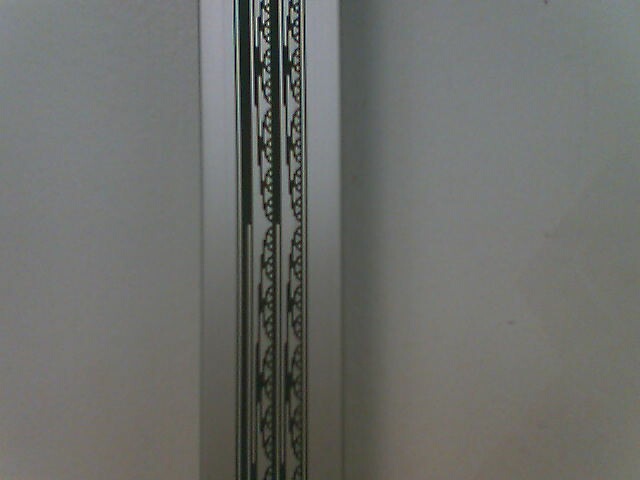Mark Dominus (陶敏修)
mjd@pobox.com

Archive:
| 2024: | JFMA |
| 2023: | JFMAMJ |
| JASOND | |
| 2022: | JFMAMJ |
| JASOND | |
| 2021: | JFMAMJ |
| JASOND | |
| 2020: | JFMAMJ |
| JASOND | |
| 2019: | JFMAMJ |
| JASOND | |
| 2018: | JFMAMJ |
| JASOND | |
| 2017: | JFMAMJ |
| JASOND | |
| 2016: | JFMAMJ |
| JASOND | |
| 2015: | JFMAMJ |
| JASOND | |
| 2014: | JFMAMJ |
| JASOND | |
| 2013: | JFMAMJ |
| JASOND | |
| 2012: | JFMAMJ |
| JASOND | |
| 2011: | JFMAMJ |
| JASOND | |
| 2010: | JFMAMJ |
| JASOND | |
| 2009: | JFMAMJ |
| JASOND | |
| 2008: | JFMAMJ |
| JASOND | |
| 2007: | JFMAMJ |
| JASOND | |
| 2006: | JFMAMJ |
| JASOND | |
| 2005: | OND |
Subtopics:
| Mathematics | 238 |
| Programming | 99 |
| Language | 92 |
| Miscellaneous | 67 |
| Book | 49 |
| Tech | 48 |
| Etymology | 34 |
| Haskell | 33 |
| Oops | 30 |
| Unix | 27 |
| Cosmic Call | 25 |
| Math SE | 23 |
| Physics | 21 |
| Law | 21 |
| Perl | 17 |
| Biology | 15 |
Comments disabled
Sun, 21 Jun 2009
Gray code at the pediatrician's office

 Last week we took Katara to the pediatrician for a checkup, during which
they weighed, measured, and inoculated her. The measuring device,
which I later learned is called a stadiometer, had a bracket on a slider that went up and down on a
post. Katara stood against the post and the nurse adjusted the bracket
to exactly the top of her head. Then she read off Katara's height from
an attached display.
Last week we took Katara to the pediatrician for a checkup, during which
they weighed, measured, and inoculated her. The measuring device,
which I later learned is called a stadiometer, had a bracket on a slider that went up and down on a
post. Katara stood against the post and the nurse adjusted the bracket
to exactly the top of her head. Then she read off Katara's height from
an attached display.
How did the bracket know exactly what height to report? This was done in a way I hadn't seen before. It had a photosensor looking at the post, which was printed with this pattern:
 (Click to view the other pictures I took of the post.)
(Click to view the other pictures I took of the post.)
The pattern is binary numerals. Each numeral is a certain fraction of a centimeter high, say 1/4 centimeter. If the sensor reads the number 433, that means that the bracket is 433/4 = 108.25 cm off the ground, and so that Katara is 108.25 cm tall.
The patterned strip in the left margin of this article is a straightforward translation of binary numerals to black and white boxes, with black representing 1 and white representing 0:
0000000000If you are paying attention, you will notice that although the strip at left is similar to the pattern in the doctor's office, it is not the same. That is because the numbers on the post are Gray-coded.
0000000001
0000000010
0000000011
0000000100
0000000101
0000000101
...
1111101000
1111101001
...
1111111111
Gray codes solve the following problem with raw binary numbers. Suppose Katara is close to 104 = 416/4 cm tall, so that the photosensor is in the following region of the post:
...But suppose that the sensor (or the post) is slightly mis-aligned, so that instead of properly reading the (416) row, it reads the first half of the (416) row and last half of the (415) row. That makes 0110111111, which is 447 = 111.75 cm, an error of almost 7.5%. (That's three inches, for my American and Burmese readers.) Or the error could go the other way: if the sensor reads the first half of the (415) and the second half of the (416) row, it will see 0110000000 = 384 = 96 cm.
0110100001 (417)
0110100000 (416)
0110011111 (415)
0110011110 (414)
...
Gray code is a method for encoding numbers in binary so that each numeral differs from the adjacent ones in only one position:
0000000000This is the pattern from the post, which you can also see at the right of this article.
0000000001
0000000011
0000000010
0000000110
0000000111
0000000101
0000000100
0000001100
...
1000011100
1000011101
...
1000000000
Now suppose that the mis-aligned sensor reads part of the (416) line and part of the (417) line. With ordinary binary coding, this could result in an error of up to 7.75 cm. (And worse errors for children of other heights.) But with Gray coding no error results from the misreading:
...No matter what parts of 0101110000 and 0101110001 are stitched together, the result is always either 416 or 417.
0101110000 (417)
0101010000 (416)
0101010001 (415)
0101010011 (414)
...
Converting from Gray code to standard binary is easy: take the binary expansion, and invert every bit that is immediately to the right of a 1 bit. For example, in 1111101000, each red bit is to the right of a 1, and so is inverted to obtain the Gray code 1000011100.
Converting back is also easy: Flip any bit that is anywhere to the right of an odd number of 1 bits, and leave alone the bits that are to the right of an even number of 1 bits. For example, Gray code 1000011100 contains four 1's, and the bits to the right of the first (00001) and third (1), but not the second or fourth, get flipped to 11110 and 0, to give 1111101000.
[ Addendum 20110525: Every so often someone asks why the stadiometer is so sophisticated. Here is the answer. ]
[Other articles in category /math] permanent link
Tue, 16 Jun 2009
Haskell logo fail
The Haskell folks have chosen a new logo.


[Other articles in category /prog/haskell] permanent link


